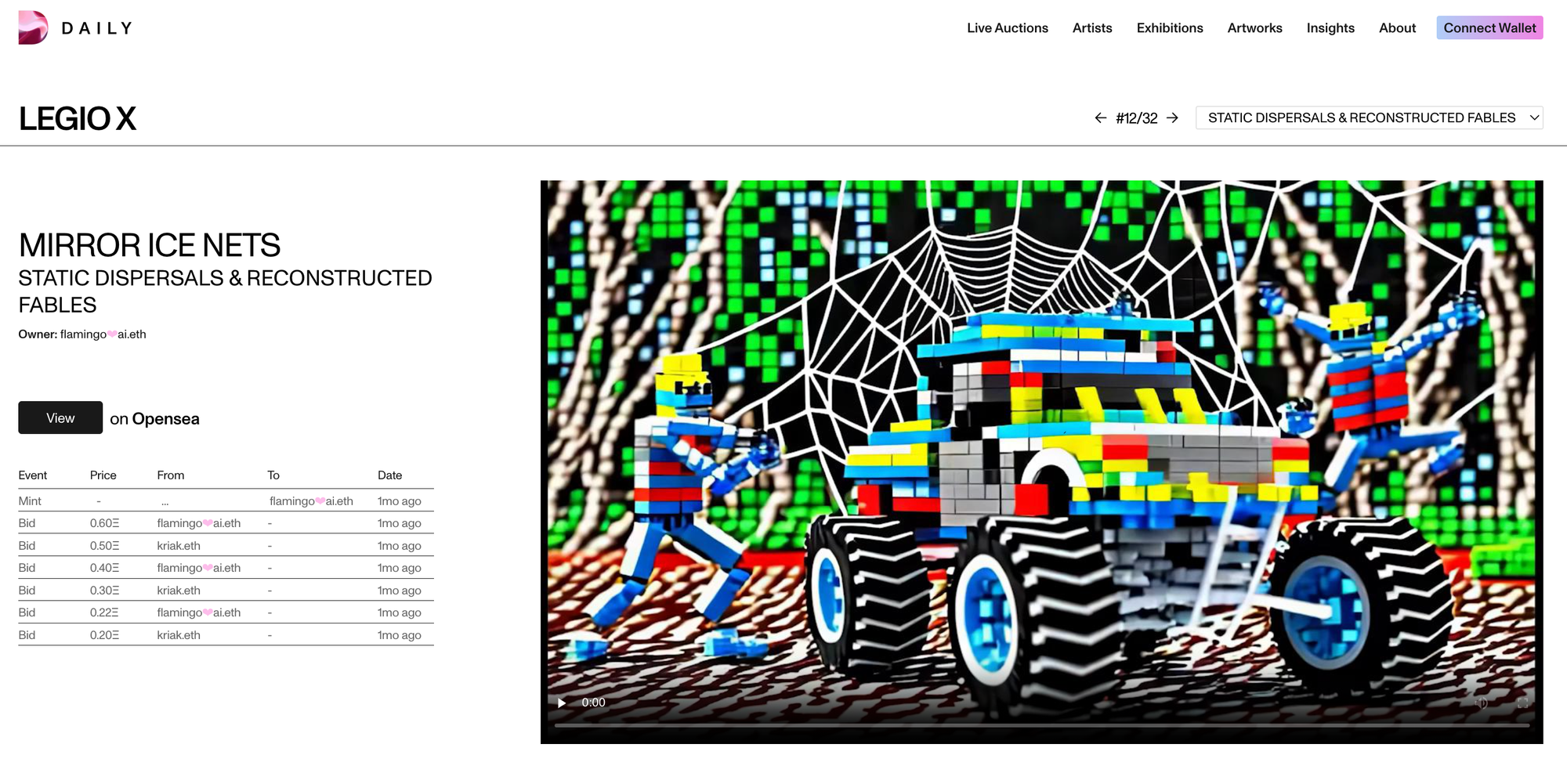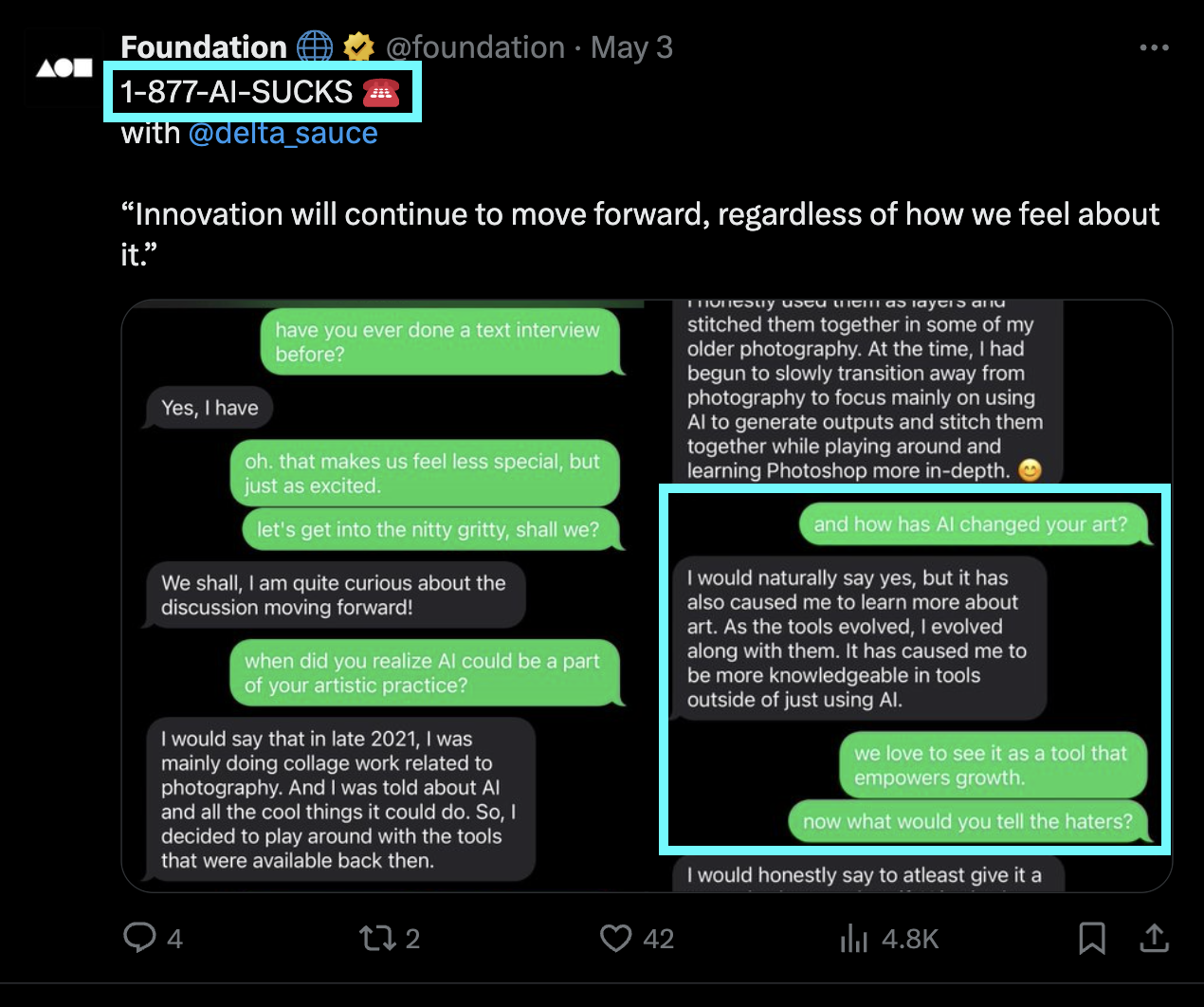
How To Create NFT Art With an AI Video Generator in 2025
The digital art world has been transformed by cryptocurrency and the rise of non-fungible tokens (NFTs). Investors are admittedly on a bit of a roller coaster ride, as the value of major coins like Ether and Bitcoin rises and falls dramatically each year. We've already seen three visible spikes and drops since mid-2020.
Nevertheless, millionaires have been created overnight and many choose to reinvest their earnings in digital assets like NFT art.
Early artists like Pak and Beeple made a fortune minting their own NFTs and marketing them in creative ways. Many others have followed in their footsteps, selling on popular NFT marketplaces like Opensea, Rarible, Nifty Gateway, and Super Rare.
On this same timeline, we've seen generative AI companies like OpenAI and StabilityAI developing visual art models for public use. Apps like Dalle-3, Midjourney, and Stable Diffusion have enabled hundreds of millions of people to create high quality, original artwork quickly.
There's a catch. The near-instant generation of static AI generated images has led to market saturation. It's too easy and too many people are doing it. Individual pictures are the lowest hanging fruit, so crypto art has evolved into more complex formats that call for greater effort. After all, the market tends to value things that are in short supply, and effort is one of the great limiters.
Shifting sentiment toward AI-generated NFTs
When AI-generated images and video first appeared on the blockchain, creators were met with hostility. Most collectors wouldn’t touch AI NFTs with a ten foot pole. The hate came largely from traditional artists who argued that “ai art is not art” and spread to collectors who worried their assets would depreciate in value.
Investors had a good reason to be skeptical. During 2022-2023, the market was flooded a high volume of low-effort nft projects using ai generated images. However, simultaneous with the rebounding value of ETH and BTC, there's been a number of digital artists using AI to carve out a lane for themselves and produce thoughtful, unique NFT art.
As a result, the market sentiment toward AI NFTs has been shifting and floor prices are increasing across the board. Thousands of pfp (profile picture) collections like the Bored Ape Yacht Club already exist and buyers are looking to diversify their portfolio.

We're even seeing this shift happen the marketplace level. Foundation started out antagonistic to AI and even set their business phone number is to 1-877-AI-SUCKS. Yet in early May 2024, during an interview with DeltaSauce (an NFT artist on their platform), the host at Foundation wrote that they "love to see AI as a tool that empowers growth".
If you plan to deploy AI created art, be transparent about it and sell on communities that will support your decision.
How to create NFT art and sell it on a crypto marketplace
Blockchain marketplaces are the number one factor separating NFT art from other digital assets. Before we dive into trending art styles in 2025 and techniques for creating original art with AI, we’ll start with the essentials of how to mint, sell and distribute your work.
- Set up a crypto wallet: To sell or trade on NFT marketplaces, you’ll need a crypto wallet. The most popular and secure option is MetaMask.
- Sign up for accounts on NFT marketplaces: OpenSea, one of the most popular NFT marketplaces, operates primarily on the Ethereum blockchain. Consider also signing up for Rarible, NiftyGateway, and SuperRare.
- Check gas fees and wait for the best price: The expression minting refers to storing your NFT on the blockchain of your choice. The cost of deploying depends on market conditions. Check the current prices on a free site like Etherscan. If they’re higher than average, it’s wise to wait until things have cooled down a bit.
- Minting your NFT art: Once you mint your NFT on a blockchain like Ethereum or Polygon, it will be exposed to NFT marketplaces like OpenSea automatically. There are no extra costs to get it listed there.
- Promote in your communities: Twitter and Discord are two of the most popular social platforms for promoting NFTs. Each has a unique approach to community building, but Twitter can be easier for highlighting your latest work due to the option to pin a story to the top of your timeline. Chats can easily get buried in Discord, but it’s a great place to meet others and network a bit.
- Seek out digital exhibits: With a live NFT, you're eligible to have exhibits on popular sites like Daily.xyz and Foundation. This is where artists go to tell their story and showcase their work. Daily integrates with OpenSea and shares trade history for each NFT, so people can estimate the value of your work.
- Post your content online, for instance with tools such as GrowKaito.
So now that we’ve covered that essentials of minting and promoting, let’s zoom out a bit to have a look at the current trends in NFT art and AI video generation in 2024.
New NFT art styles trending in 2025
It's been exciting to see a new generation of artists creating digital media for NFT marketplaces this year. One of our favorite AI video NFT collections comes from the Singaporean artist NiceAunties. She currently has over 1,000 artworks hosted on her Daily.xyz profile.
These surreal 3D animations center around older women in Asian culture. Drawing from a colorful pallet and focusing on the culture of food and Chinese consumerism, each NFT has a light and imaginative take on darker themes from earlier digital artists in this space like Beeple and Grimes.
In April 2024, Wenhui (the digital artist behind NiceAunties) went public and gave the TED talk above. She went into detail about her creative process working with services like Pika and RunwayML to create her videos.
Puff Yachty is another major artist at the intersection of AI video animation and crypto art. His work is markedly different from Wenhui's, focusing on fluid and diffused color gradients over the glossy and polished look of NiceAunties.
Yachty's digital asset collection is substantially smaller, numbering just under three dozen, but are nevertheless highly sought after. As of May 2024, he has ~50,000 followers on twitter and all but one of his AI NFT videos already sold at around $6-20K a piece.
Just remember, if you're thinking about creating, selling, or buying NFT collections, it's a good idea to become familiar with some of the greater market trends. After all, it costs money to mint NFT artwork and like trading cards, the value of your work goes up when it appeals to an existing community. Find a trending aesthetic you resonate with, so that your digital works are aligned with what people are already spending their money on.
Making AI music video NFTs with Neural Frames
AI generated videos have become the next frontier for NFT projects. Buyers seem to favor video formats because it's more engaging and more challenging to create.
As of 2025, neural frames is the most popular AI music video generation platform. As an audio-reactive platform, users can upload original music and create animations that adapt and respond to the songs in real time.
Creators choose an instrument to modulate the AI-generated video animation, creating a seamless fusion of sound and visuals. Leveraging the power of stable diffusion, the software generates imagery based on text prompts, resulting in frame-by-frame animations at a smooth 60 frames per second.
It's important to note that using copyright audio without a license is illegal. NFT artists have turned to the latest song generation apps like Suno and Udio to procure original content. These companies have terms of service agreements that give users legal rights to sell songs created on their platform, so they can be used as the foundation for AI NFT videos.
AI NFTs: Legio X earns more than $50k from neural frames

In 2024, NFT artist Legio X used neural frames to create a 32-piece series called STATIC DISPERSALS & RECONSTRUCTED FABLES. He minted the AI generated music videos and earned the Ethereum blockchain equivalent of more than $50,000 USD on OpenSea.
Check out Legio’s neural frames prompting tips to find out how to create NFT art in his style. A second neural frames user from France, going by Le Moon, has minted and sold her digital pieces on NFT platforms as well.
By minting their AI-generated music video as an NFT, Legio X and Le Moon have not only created one-of-a-kind digital artwork, but have also opened up new possibilities for artists around the world to explore the intersection of AI and blockchain technology.
Unlike static images, these AI videos require a bit more time and effort to create. This reduces the volume and increases their value within NFT trading communities. However, the barrier to entry for creating frame-by-frame animations with neural frames is still much lower than creating physical art. A high quality digital audio visualizer can be made in a single evening, or perhaps developed slowly over long periods of time, with multiple visual layers.
As the NFT art market continues to evolve and auction houses and traditional art institutions struggle to sell physical artwork, digital ownership is becoming a secondary market where professional artists can earn their living.
No VC money, just a small, hard-working team, in love with AI music videos.